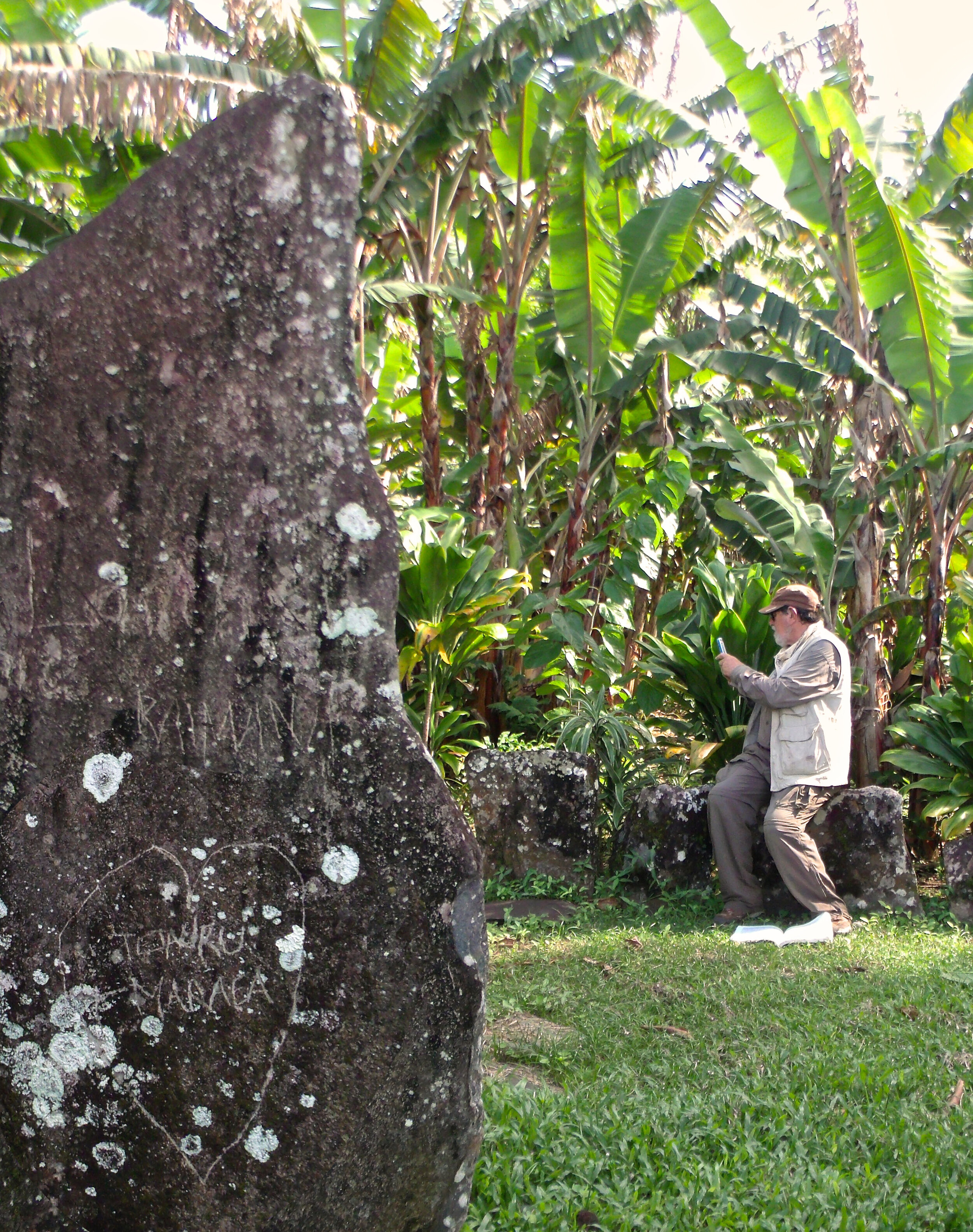
Raivavae 2015
The Orientation of Sacred Sites on Raivavae, The Austral Islands, French Polynesia (with a Brief Study of marae on Huahine & Raiatea)
Expedition
The goal of this expedition was to use archaeoastronomy to observe and document connections between the elite ‘chiefly’ sites of Raivavae, Huahine, and Raiatea. Dated roughly back to the 8th century, 16 clans united the people of Raivavae with the surrounding islands in a kinship network of trade and ritual offerings. Measurements of various structures were taken while observing constellations known to have significance in Polynesian oral tradition.
Identifying different Marae
On Raivavae the team conducted a wide survey and typology of different marae, the most prominent archaeological feature on the island made of large stones. A location of chiefly power in ancient times, some also are thought to have ceremonial or religious features. Out of 63 identified they were observed to have paved open courts/ramps, unpaved enclosed courts, paved enclosed courts, an ahu (shrine), a paved approach, or some combination.










New Methods
One of the goals of the expedition was to remeasure points taken in Edmundo’s 1987-1991 survey which used a magnetic compass that produced some unreliable data due to magnetic anomalies in the soil. The 2016 measurements were taken with a Brunton high-quality magnetic compass with an up-to-date magnetic declination, as well as 3-4 digital giro compasses, a GPS, and an application called Spyglass on iPhones and iPads. This data was provided to astronomers Francisco Förster and Elise Servajean from the University of Chile who went over the readings together, considering both an ethnographic and astronomical interpretation of our findings.
Haturituri Fortress
In several of the Austral Islands includinfg Raivavae, fortified hilltop villages were in use up until roughly 1830. One of these was the Haturituri Fortress first documented by Thor Hyerdahls team in 1965. In 2015 PIRI returned to this location and team member R.L. Crossland wrote a follow up report of the conditions of the sites and their historical context.











